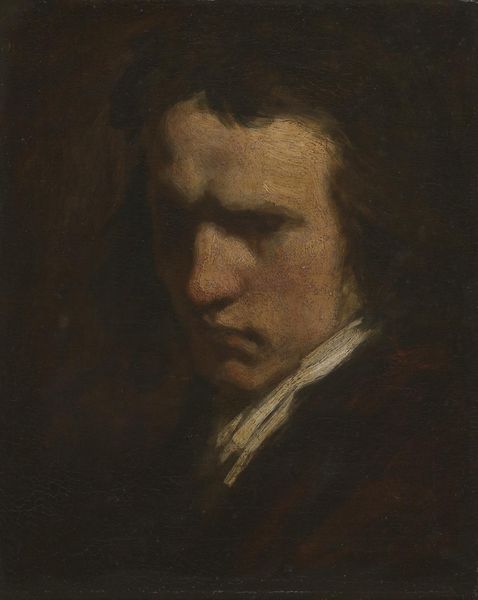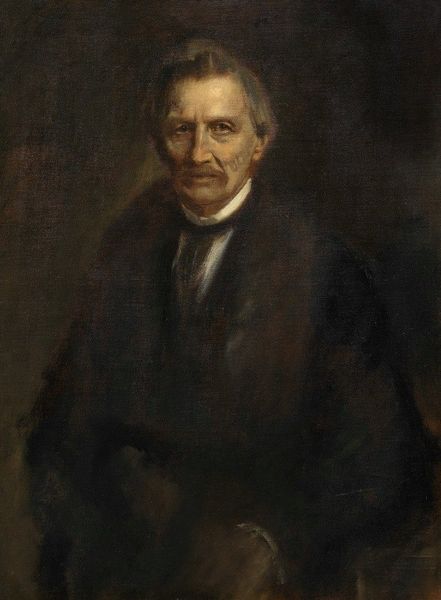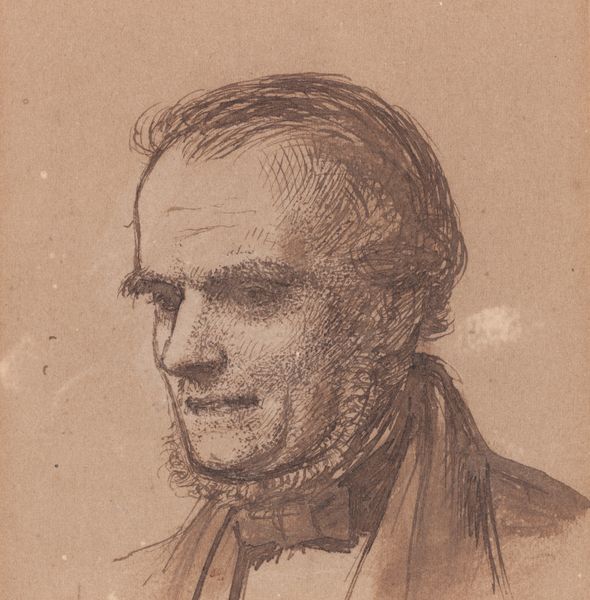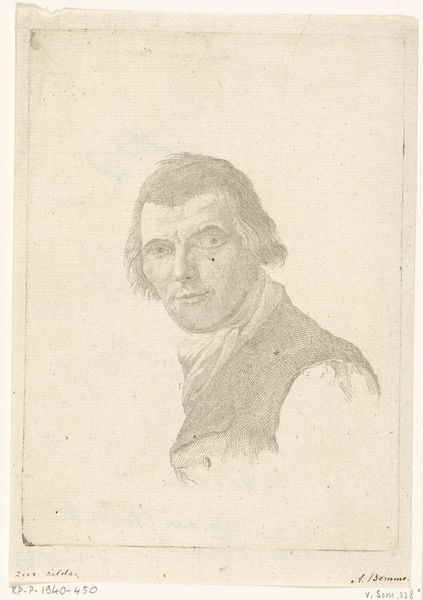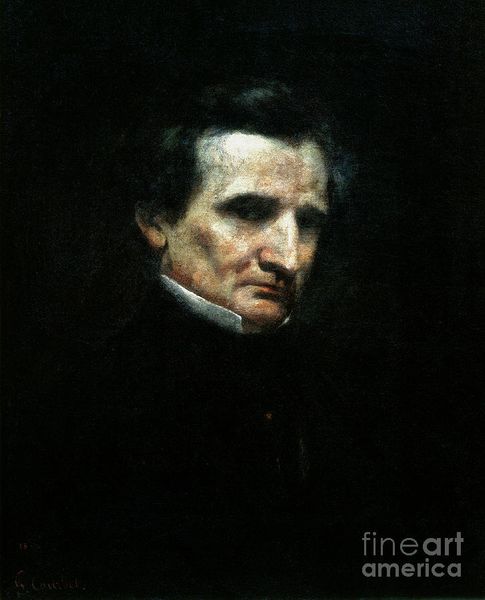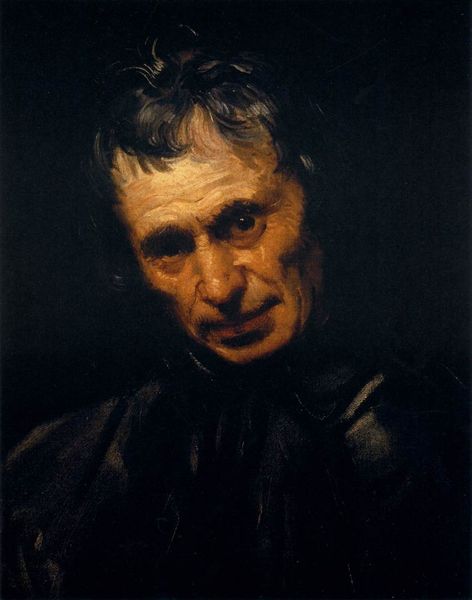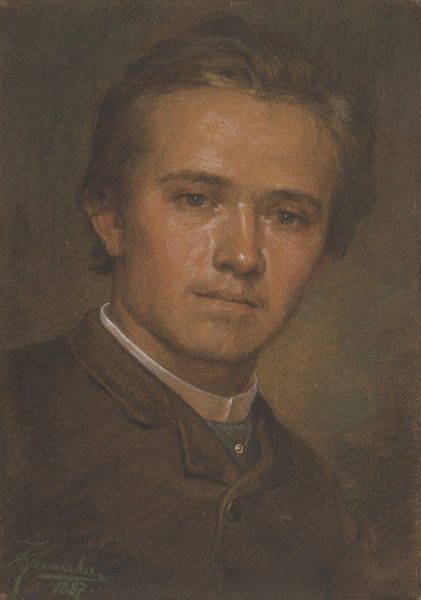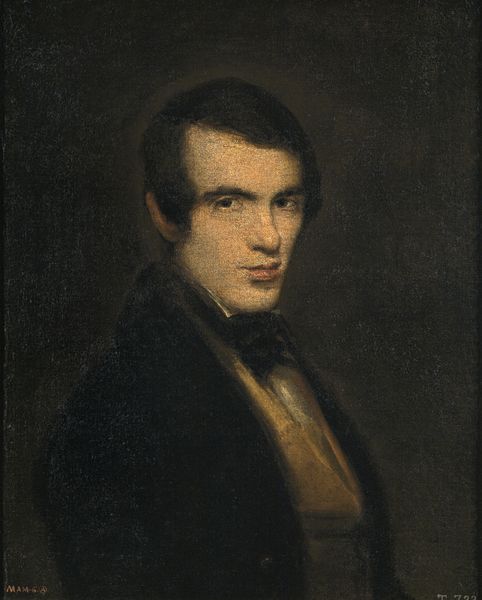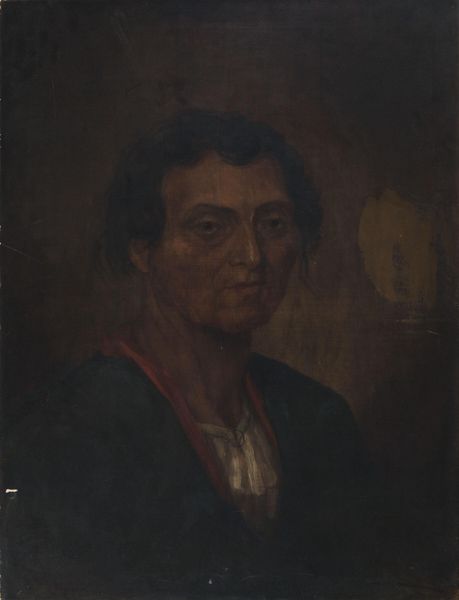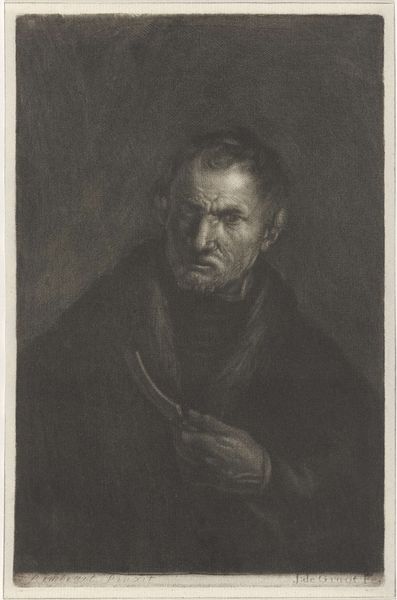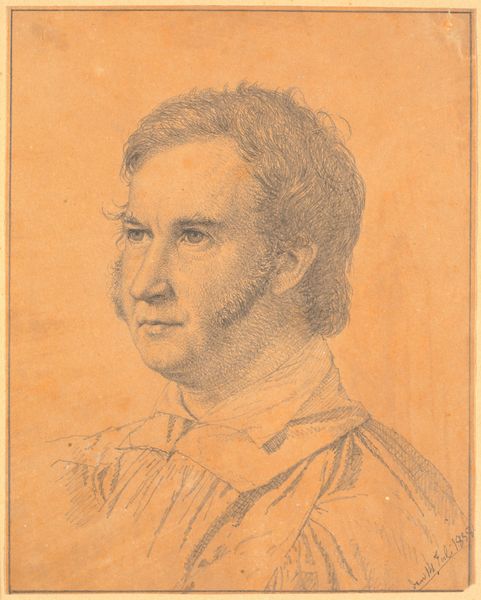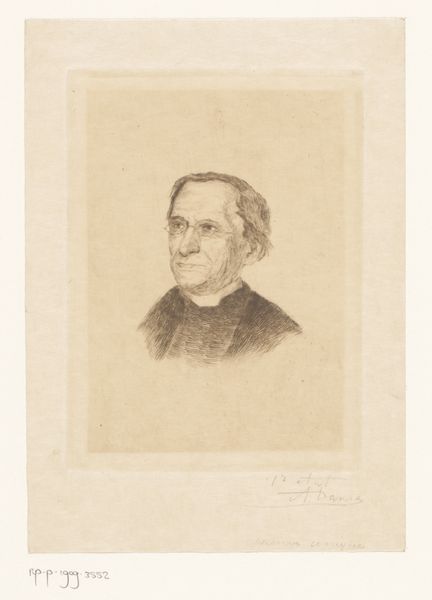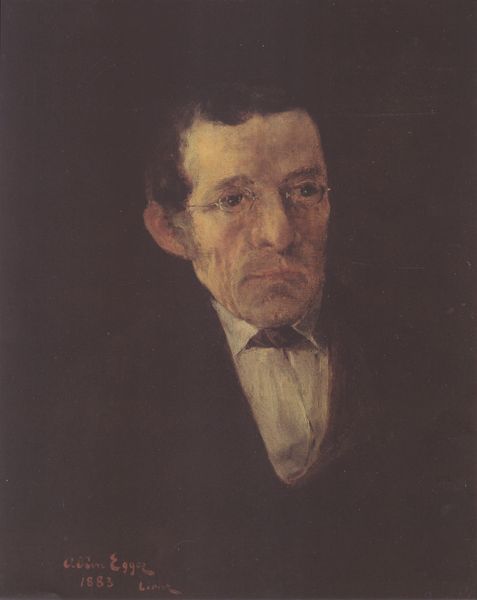
oil-paint
#
portrait
#
figurative
#
oil-paint
#
charcoal drawing
#
portrait reference
#
portrait head and shoulder
#
romanticism
#
animal drawing portrait
#
portrait drawing
#
facial study
#
facial portrait
#
portrait art
#
fine art portrait
#
realism
#
digital portrait
Copyright: Public Domain: Artvee
Curator: Here we have Gustave Courbet's 1850 oil painting, "Portrait of the Composer Hector Berlioz." Editor: My first impression is the somber tone, the way the subject emerges from near darkness. The values seem so tightly controlled, giving it a very serious mood. Curator: Considering Berlioz's revolutionary impact on Romantic music, this gravity seems appropriate. Courbet was, after all, deeply invested in representing his contemporaries and challenging academic art. How does the portrait speak to Romanticism or even the nascent Realism movement in painting? Editor: You can certainly see Romanticism in the dramatic lighting and emotional intensity. Look at the way light models Berlioz’s face, particularly the intensity around his eyes and forehead. And the dark background serves to isolate him, which emphasizes his individual genius. However, the blunt honesty and lack of idealization point to Realism. It's a really interesting tension. Curator: Absolutely. Think about the social context of mid-19th century Paris. Berlioz was known for pushing boundaries. Do you think Courbet captures that rebellious spirit or, more likely, chooses to portray his artistic persona? Editor: That’s a key question. Courbet captures his physiognomy faithfully, but it also projects a persona of intellectual depth. Consider the stark contrast between the light falling on his face and the obscured lower half of the composition. Is that an intellectual aura around the man? It’s really a masterful arrangement of light and shadow. Curator: His intense gaze does demand attention, a challenge, perhaps? This painting stands as both a historical record of a significant cultural figure and a commentary on the shifting artistic landscape. Editor: Indeed. The nuances in composition are effective at conveying so much more than simply a record of Berlioz's appearance, something beyond objective representation. Curator: It provides a snapshot of an individual but, also, reflects on larger socio-political dialogues happening at that time. Editor: A fascinating example of art’s capacity to capture not just a likeness, but the weight of a historical moment through visual strategies.
Comments
No comments
Be the first to comment and join the conversation on the ultimate creative platform.
